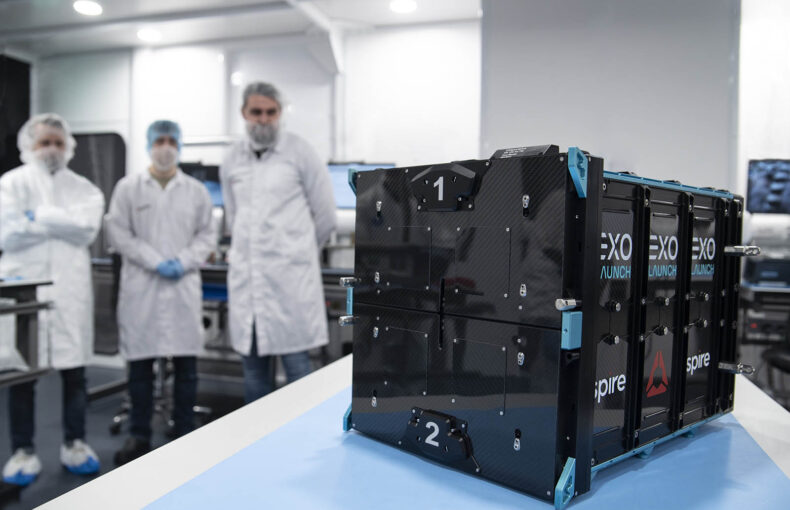Avoiding the hidden horrors of franken-system satellite constellations
Six unnecessary challenges that can make developing satellite constellations harder.
In past blogs we’ve looked at the huge influx of ‘New Space’ providers entering the market. Satellite constellations addressing niche use cases are on the rise. This growth of the Space ecosystem has led to the growth of a host of services, platform-as-a-service, ground-station-as-a-service, launch-as-a-service (albeit, on decline), and mission-operations-as-a-service.
There are constellation builders today who are either choosing to partner with a multitude of service providers to get the best combination of offers and some are choosing to work with single vertically integrated providers.
In this article, we look to dissect the intricacies of these approaches: are there any pitfalls to a fragmented approach? Is a vertically integrated satellite-as-a-service provider better suited for scale?
In theory, a combination of multi-partners that deliver the best bang for the buck and are renowned for their specialization sounds like the path to take. However, this segmented approach to building a mission will mean working with multiple companies with different standards, processes, and tech stacks. One for design and test, another for launch another for ground segment, and so forth. While this might seem sensible from a theoretical point of view, the practicalities can unveil hidden challenges when tasks are divided across sub-systems with multiple owners.
The deeper questions after technical compatibilities are some of the following. Can your vendor deliver for your future scale? Since mission planning is sequential, how do you safeguard against a domino effect of delays and failures? Our experience has shown that you run the risk of ending up with a constellation that looks like Frankenstein’s monster – every part that works well in isolation doesn’t necessarily integrate effectively. And even if they do, you have to coordinate with different suppliers every time you want to scale, bringing separate administrative challenges, time pressures, and unplanned logistical issues that may distract from accomplishing the mission at hand.
The challenges of building a franken-satellite mission

In this cartoon, you see a program manager dealing with multiple vendors, novel technologies, and integration risks that are bound to show up much later in your mission cycle. Your satellite mission is a sum of parts, many vendors can lead to multiple integration risks.
The most successful companies operating at scale (like Planet, SpaceX, and Spire) don’t take a piecemeal approach to finding suppliers because it creates complexity and barriers to growth. The same principle applies even more to small to medium-sized companies that have limited time, budgets, or resources for administration, project management, and contractual bureaucracy. No matter the size of the company, a single provider will ensure that systems and subsystems talk to each other, creating a single synchronous journey that can grow as needed.
Six challenges of having multiple vendors for your satellite constellation:
1. Poor integration
When systems aren’t designed together, there’s a risk that they won’t integrate. Since a mission is a combination of many components, these issues show themselves, the more partners you have, the more likely it is that the systems could face this problem. A satellite mission is planned across manufacturing, launch manifest, ground station network for operations, etc, – in parallel streams and comes together as a full mission at the very end. Therefore with a multi-partner approach, critical integration issues don’t arise upfront and instead have a pyramid tumble effect right at the point of mission finalisation.
2. Performance issues
There’s a big difference between building hardware that someone else operates and building hardware that you have operational excellence in. Today, you can access a growing number of services; mission design as a service, ground segment as a service, platform as a service, and so on. However, experience tends to be limited when compared to providers who have gained flight heritage from holistic operations of scale and capability across a growing fleet, such as Spire. Furthermore, since Spire is its own customer – Spire Space Services’ infrastructure delivers results for the data side of our business – as your satellite provider, you leverage from our 600+ years of flight experience across 160+ satellites that have undergone 30+ variations. Our learners are embedded in the solutions that we provide for your space needs.
3. Slipping timelines
Any delay in the timeline (due to your technical developments or an external factor meaning a deliverable isn’t ready or a launch has to be moved) can cause you to miss targets you have set with partners and investors. But even if timelines do slip, a company like Spire, which is vertically integrated across mission design, manufacture, test and integration, deployment, and operations can switch the many steps and sequences of your mission to make up for delays across the value chain giving you access to a variety of opportunities for reaching orbit and keeping your plans on track. When a company works at scale, it is able to offer schedule resilience and counter the ripple effect of dynamic changes.
4. Administration and legalities
Working with a single supplier with a track record for delivering similar missions to precise requirements will reduce the amount of time and money to be spent on necessary bureaucracy, whether that be NDAs, export licenses, or insurance considerations. Different providers mean multiple conversations, jurisdictions, and viewpoints before you reach each agreement to begin the work. The concept of satellite constellations that need to have a global license and regulatory framework is new. These challenges are not limited to single-country licenses. It’s worth asking the question, “Does your ground-station-as-a-service provider have a license that is in sync with your satellite platform license?”. And if so, “Are these licenses in sync with ITAR compliance or ITAR free compliance processes?”
5. Mission control
The more partners you have, who in turn are relying on their supply chain partners, the more external factors that lie outside your control come into consideration. Not all space flight heritages are equal. You could be working with multiple partners that offer space-tested solutions – but that doesn’t imply a seamless, de-risked, and successful end-to-end value chain. A de-risked value chain from a reliable partner is a critical factor in determining mission success.
6. Funding a multi-partner approach
You’ll likely be asked to pay 90% upfront payment for each part of the mission development. Today the funding environment is at its toughest, with businesses expected to reach profitability faster than ever, regardless of the time it may take to achieve growth and begin scaling activity. Space isn’t just tough, it’s expensive too, and commercial viability for a satellite business is a long-term goal. This problem is further compounded when you work with a multi-vendor mission builder. The majority of vendors will ask for 90% upfront capital, straining your cash flow and adding the pressure of large expense lines to your balance sheet. This will quickly drain your resources, negatively impacting your ability to focus on product development or reaching minimum viable scale, because instead of your time, money, and energy going into building your big product idea, you’re instead trying to fund the building of space infrastructure from multiple suppliers.
Final thoughts
The current maturity of the market is such that many new providers are yet to gain extensive experience of the complexities that can arise when you move from one satellite in space to five, or indeed from five satellites in space to twenty. This will come in time as the new entrants gain experience, but for now, the above challenges provide examples of unrealised issues further providing that “space is hard!” without experienced support, beyond more obvious technology milestones.
As we have seen, choosing multiple vendors with limited levels of experience not only creates a ‘false economy’ via perceived cost savings on the surface that can drive up your cost in the early stages of a project but can also store up problems that only emerge when you want to scale. The Spire SpaaS model helps to de-risk each element of the project, reduces administration, and increases experience, with lower CapEx expenditure and fewer barriers to scaling.
Find out how we can help you deploy and scale your constellation and software in space with Spire Space Services.
 Written by
Written by


